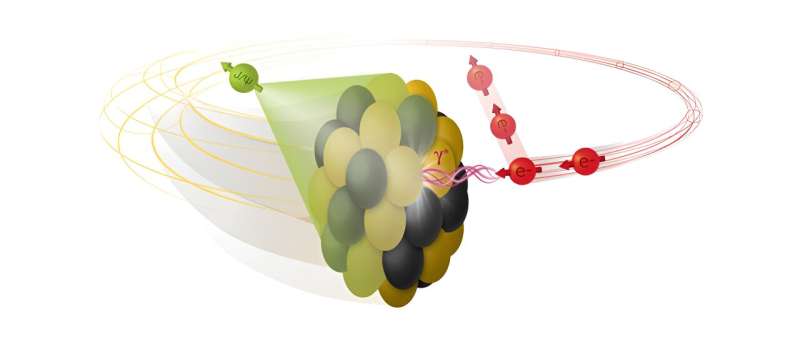This article has been reviewed according to Science X's editorial process and policies. Editors have highlighted the following attributes while ensuring the content's credibility:
fact-checked
peer-reviewed publication
trusted source
proofread
Theoretical work indicates that the future Electron Ion Collider can be used to measure the shape of atomic nuclei

Scientists have developed a new way to study the shapes of atomic nuclei and their internal building blocks. The method relies on modeling the production of certain particles from high-energy collisions of electrons with nuclear targets. Such collisions will take place at the future Electron Ion Collider (EIC). The findings are published in the journal Physical Review Letters.
These results show that collisions that exclusively produce single mesons (a particle made of a quark and antiquark) offer insights into the large-scale structure of the nucleus, for example, its size and shape. This will help reveal how much the nucleus resembles a cigar or a pancake. Higher-momentum mesons can reveal nuclear structure at shorter length scales, including the arrangement of quarks and gluons within protons and neutrons.
This work suggests that studying mesons produced in EIC collisions will provide novel insights into the structure of atomic nuclei. This method is distinct from traditional methods such as colliding two nuclei at relatively low energy and knocking out a neutron or proton, or exciting nuclei in an electromagnetic field.
These traditional methods are sensitive to the distribution of electric charge within nuclei. But the new method gives insight into the distribution of gluons, the particles that hold together the quarks that make up these larger nuclear building blocks. This makes the method a deeper form of "X-ray vision" for atoms.
This work by theorists at Brookhaven National Laboratory, the University of Jyvaskyla in Finland, and Wayne State University provides a theoretical framework for studying nuclear structure at the future EIC. The EIC is a state-of-the-art nuclear physics research facility being built at Brookhaven Lab.
The research shows that EIC collisions that exclusively produce single vector mesons will be sensitive to the detailed structure of the nuclear target. In these collisions, the target may stay intact or break up. When it breaks up, the cross-section, which is a measure of the probability that the process will occur, is sensitive to fluctuations in the target. These can be driven by position fluctuations of the neutrons and protons. The new work shows that when the target is deformed, these fluctuations are significantly modified, changing the measured cross-section.
Because the measurements are done at much higher collision energy than traditional nuclear structure experiments, the interactions are sensitive to the gluon distributions inside the protons and neutrons of the nucleus.
Measuring gluon distributions inside the nucleus, rather than the distribution of electric charge, will provide new insight into how these two distributions differ, and how the gluon distribution depends on the energy used to make the measurement.
This technique opens a new direction for research at the EIC and could lead to important information that complements information from traditional nuclear structure experiments. It will help scientists understand how nuclear shapes evolve with energy and provide new information on nuclear structure that was previously inaccessible.
More information: Heikki Mäntysaari et al, Multiscale Imaging of Nuclear Deformation at the Electron-Ion Collider, Physical Review Letters (2023). DOI: 10.1103/PhysRevLett.131.062301
Journal information: Physical Review Letters
Provided by Brookhaven National Laboratory



















